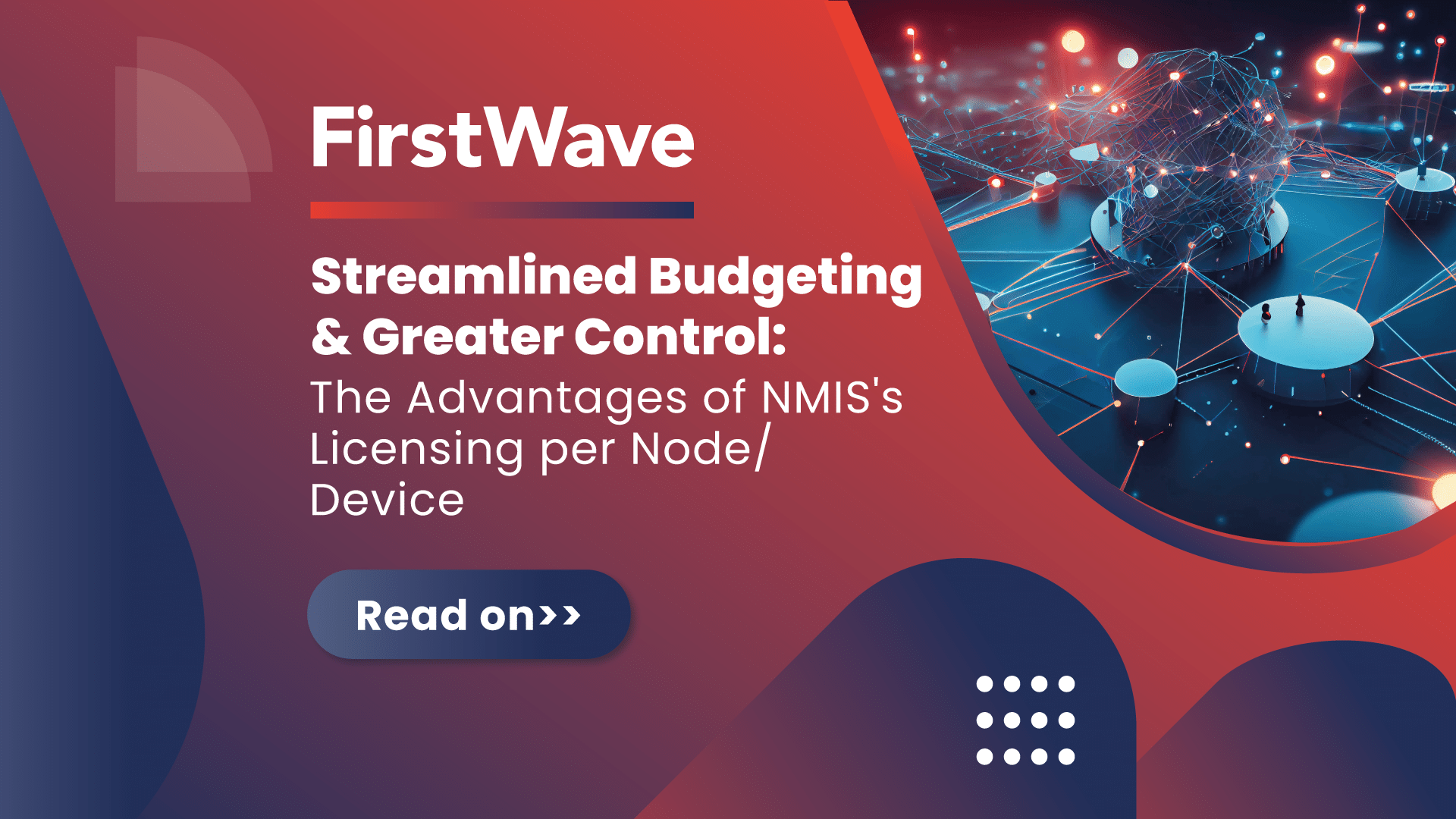10 June 2023
The Benefits of Licensing per Node/Device For your Network Management Software.

Effective network management is crucial for organizations of all sizes and industries. Choosing the right network management software plays a pivotal role in ensuring optimal performance and streamlined operations. One important aspect to consider when evaluating network management software is its licensing structure. In this article, we will delve into the advantages of licensing per Node or Device with NMIS (Network Management Information System), shedding light on how this approach simplifies licensing, reduces costs, and empowers IT teams to efficiently manage their networks.
NMIS Overview:
NMIS is a versatile network management system that offers an array of features, including network monitoring, alerting, reporting, and performance analysis. Its modular architecture allows for easy customization and configuration to align with an organization’s specific needs. However, one standout feature of NMIS lies in its innovative licensing structure, which is based on a per Node/Device model.
Streamlined Licensing Process:
Traditional network management software often employs a per-interface licensing model, which can be complex and expensive. NMIS, on the other hand, adopts a more customer-friendly approach. Instead of paying for each interface or port, customers only need to pay for the number of devices they wish to monitor. This straightforward licensing model simplifies the purchasing process and gives customers greater control over their network management budget.
Unrestricted Network Visibility:
The per Node/Device licensing structure provides IT teams with significant benefits, particularly in terms of network visibility. With NMIS, there are no limitations on the number of interfaces or ports that can be monitored. This eliminates scenarios where vital metrics remain uncollected due to license restrictions. IT teams can now have an unhindered view of their entire network, enabling them to make informed decisions and promptly address any potential issues. Moreover, customers can choose the specific devices they want to monitor without the burden of licensing limitations or additional costs.
Cost Reduction with NoSQL Database:
Another aspect worth mentioning is the cost reduction potential associated with NMIS. By utilizing a NoSQL database, such as MongoDB, instead of traditional Microsoft Windows Server and MS SQL Server employed by other network management solutions, organizations can further decrease costs and minimize the total cost of ownership for their network management system. This not only offers financial advantages but also enhances the scalability and performance of the solution.
Conclusion:
In conclusion, the per Node/Device licensing structure offered by NMIS delivers significant benefits to IT teams and organizations alike. It simplifies the licensing process, making network management budgeting more manageable. Moreover, it reduces the total cost of ownership for the network management solution, ensuring that IT teams always have a comprehensive and unrestricted view of the network. This flexibility empowers IT teams to efficiently manage their network infrastructure, resulting in more effective and streamlined network management operations.
When evaluating network management software, it is crucial to consider the licensing structure and determine whether per Node/Device licensing, such as the one offered by NMIS, aligns with your organization’s requirements. By choosing the right network management software, you pave the way for efficient network management and unlock the full potential of your network infrastructure.